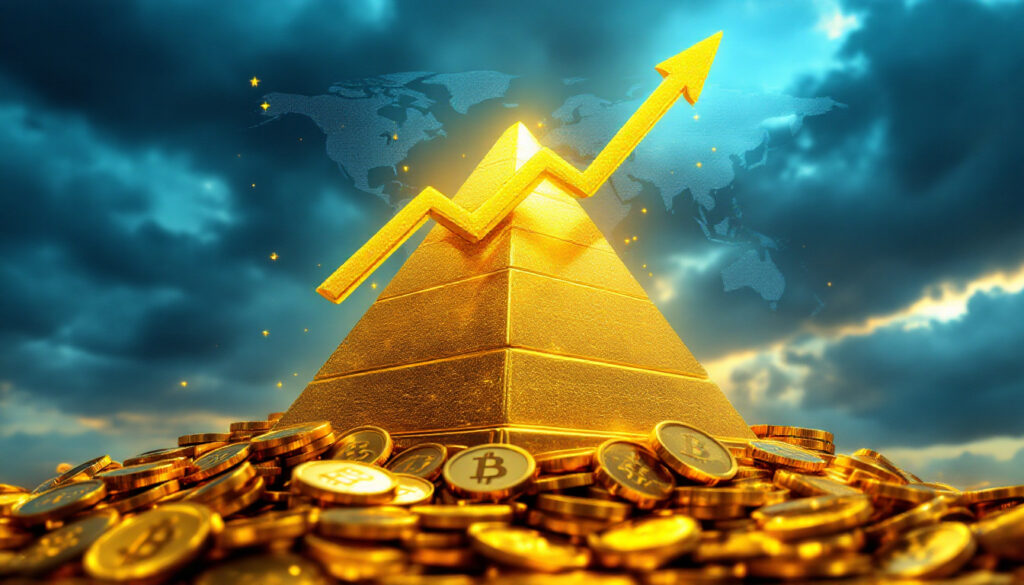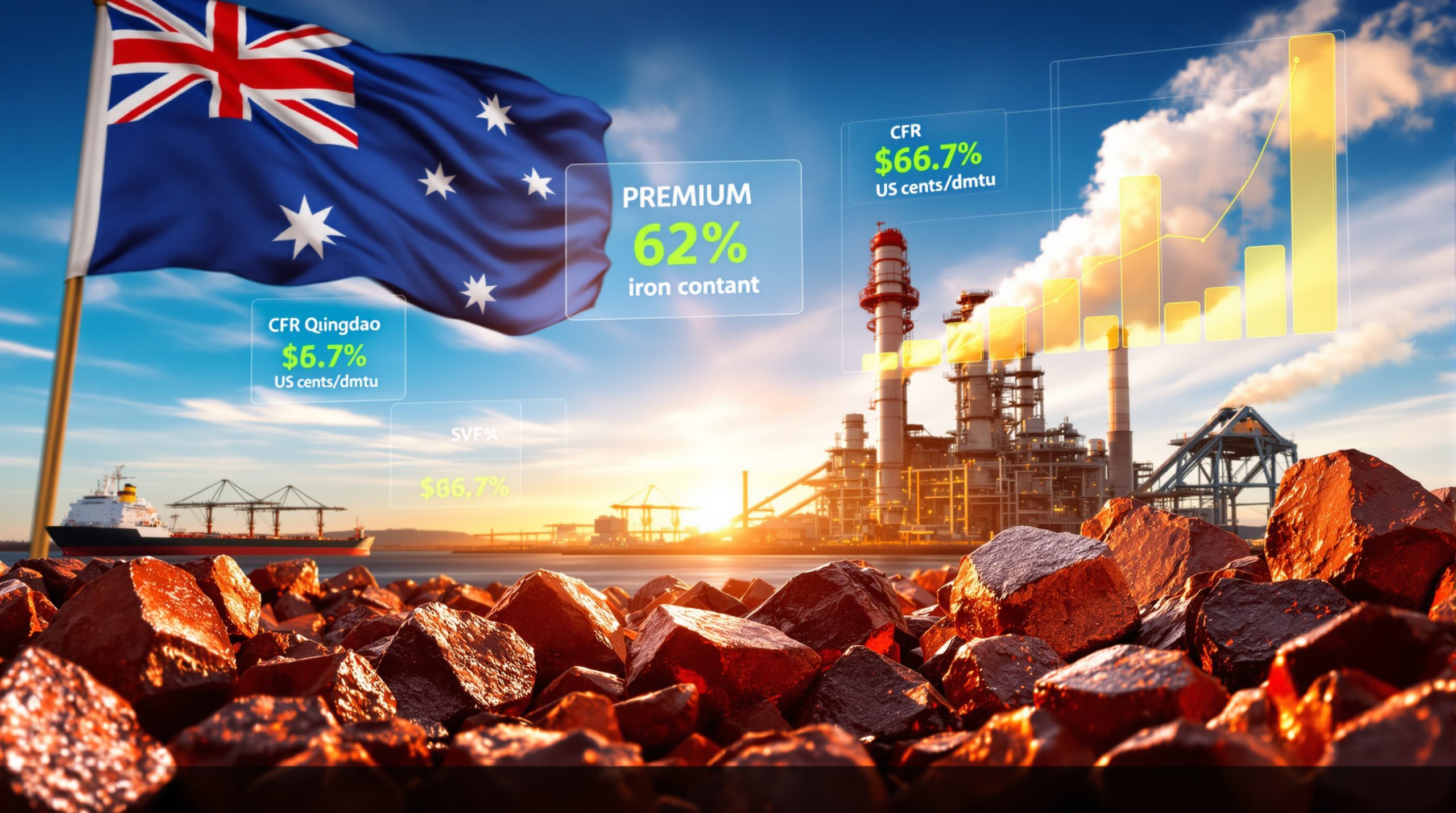Gold Price Surpasses $3,300: A New Record Amid Global Economic Uncertainty
Gold has achieved another historic milestone, surpassing the $3,300 mark amid escalating global economic uncertainty. Spot gold reached an impressive $3,313.45 per ounce, representing a 2.7% increase that sent shockwaves through financial markets worldwide. This rally established a new all-time high of $3,318.80, demonstrating gold's enduring appeal as a safe-haven asset during turbulent economic periods.
The precious metal's surge coincided with U.S. gold futures gaining 2.7% to reach $3,326.80 per ounce, while the U.S. dollar depreciated to a near three-year low against rival currencies, further bolstering gold's attractiveness to international investors seeking stability.
"Gold remains heavily supported by a weaker dollar, uncertainty around tariff announcements, and fears about a global recession," explains Lukman Otunuga, senior market analyst at FXTM. "The combination of these factors has created a perfect storm for gold prices to continue their upward trajectory."
What Factors Drove Gold to Break the $3,300 Barrier?
Latest Price Movements and Market Reaction
The recent surge past $3,300 represents the culmination of several months of steady gains. Market data indicates that spot gold's 2.7% daily increase came amid heightened trading volumes, with over 24 million ounces changing hands on major exchanges—nearly double the average daily volume.
The dollar index, which measures the greenback against a basket of six major currencies, fell to 94.2, its lowest level in three years. This depreciation has made dollar-denominated gold less expensive for holders of other currencies, fueling additional demand from international investors and central banks alike.
Technical analysts note that gold's relative strength index (RSI) has reached 78, indicating overbought conditions, yet momentum indicators suggest the rally may still have room to run despite potential short-term corrections.
US-China Trade Tensions as Primary Catalyst
U.S. President Donald Trump's recent order for a probe into possible tariffs on all critical minerals imports served as the primary catalyst for gold's latest surge. This investigation directly pressures China, the undisputed leader in critical minerals production and processing, which controls approximately 80% of rare earths refining capacity globally.
The escalating dispute with global trade partners has injected significant uncertainty into markets. Trump's unpredictable tariff policies have created havoc across global financial markets, prompting investors to seek refuge in traditional safe havens like gold.
"What we're witnessing is a flight to quality triggered by renewed geopolitical tensions," notes Dr. Martin Chen, chief economist at Global Minerals Advisory. "The critical minerals tariff probe specifically targets China's dominance in these strategic resources, potentially disrupting supply chains across multiple industries, from electric vehicles to defense."
How Has Gold Performed as an Investment in 2025?
Year-to-Date Performance Metrics
Gold has delivered remarkable returns in 2025, rising an impressive 27% year-to-date and ranking among the top-performing assets globally. This performance has significantly outpaced traditional investment vehicles like equities (S&P 500 up just 11%) and bonds (Bloomberg Global Aggregate Index down 1.2%).
The precious metal has achieved a series of record highs, breaking through multiple key thresholds including $3,000, $3,100, $3,200, and now $3,300 in the span of just five months. This exceptional performance has attracted attention from institutional investors who previously favored more conventional assets.
Gold's risk-adjusted returns have been particularly impressive, with a Sharpe ratio of 1.8 compared to 0.9 for the S&P 500 and 0.6 for U.S. Treasury bonds, highlighting the metal's effectiveness as both a safe haven and a return-generating asset in the current market environment.
Expert Commentary on Gold's Rally
"The gold market is thriving in this period of uncertainty, but the foundations are very tangible and real," states Evy Hambro, Global Head of Thematic and Sector Investing at BlackRock Inc. "We're seeing persistent institutional demand, central bank purchases, and increasing retail interest all converging to drive prices higher."
Rick Kanda, chief market strategist at The Gold Bullion Company, offers an even more bullish outlook: "$4,000 is absolutely possible, and considering the economic pressures, I think it may even be probable before year-end. The technical indicators suggest we're in a sustained bull market with strong momentum."
A recent Bank of America survey reveals that 42% of fund managers now expect gold to be the best-performing asset class in 2025, a dramatic increase from just 23% in March. This shift in sentiment among professional investors indicates growing consensus about gold's intermediate-term prospects.
What Are the Key Drivers Behind Gold's Sustained Growth?
ETF Inflows and Institutional Investment
Gold ETFs 2024 Strategies have experienced remarkable growth, recording an inflow of 226.5 tonnes worth $21.1 billion in Q1 2025—the largest quarterly inflow in three years. These figures represent a significant vote of confidence from institutional investors in gold's role as a portfolio stabilizer during uncertain times.
Institutional holdings in gold ETFs now represent 3.2% of global assets under management, nearly doubling from 1.8% in 2024. This allocation shift reflects growing concerns about equity valuations, inflation persistence, and currency debasement risks.
"What's particularly noteworthy is the breadth of institutional participation," explains Maria Sanz, head of precious metals research at Global Investment Bank. "We're seeing sovereign wealth funds, pension managers, endowments, and even traditional equity-focused hedge funds increasing their gold allocations substantially."
Central Bank Accumulation
Robust central bank purchases have continued unabated, with official sector buyers adding 89 tonnes to their reserves in March 2025 alone. China has been particularly active, adding to its reserves for the fifth consecutive month with purchases totaling 42 tonnes since November 2024.
This growing trend of central banks diversifying reserves away from traditional currencies reflects concerns about the U.S. dollar's long-term prospects and geopolitical tensions affecting major reserve currencies. Central bank reserves allocated to gold have risen to 15.6%, gradually displacing euro and yen holdings in diversified reserve portfolios.
"Central banks are voting with their vaults," observes former Federal Reserve economist Dr. Jonathan Williams. "The sustained accumulation by monetary authorities globally signals a fundamental shift in reserve management philosophy toward hard assets with no counterparty risk."
What Do Experts Predict for Gold's Future Price?
Goldman Sachs Forecast
Goldman Sachs has upgraded its gold market outlook 2025 three times already in 2025, now projecting gold to reach $4,000 an ounce by mid-2026. Their analysis cites structural factors including persistent inflation, slowing global growth, and declining real interest rates as supportive of sustained higher gold prices.
The investment bank's commodity research team notes that gold has historically performed exceptionally well during periods of stagflation—combining sluggish economic growth with elevated inflation—conditions they believe are increasingly likely in the next 12-18 months.
Goldman's $4,000 forecast implies a 21% upside from current levels, representing what would be the most sustained bull market for gold since the 2008-2011 period when prices nearly tripled.
Industry Expert Predictions
Industry experts have become increasingly bullish as gold continues its upward trajectory. According to Reuters' latest report, Rick Kanda of The Gold Bullion Company asserts: "$4,000 is absolutely possible, and considering the economic pressures, I think it may even be probable. We're seeing unprecedented demand from both institutional and retail investors."
A recent Bank of America survey reveals that 42% of fund managers expect gold to be the best-performing asset class in 2025, up dramatically from 23% in March. This shift reflects growing consensus about persistent inflationary pressures and slowing economic growth globally.
Not all experts share this bullish outlook, however. JPMorgan analysts have recently cautioned about overbought technical indicators, suggesting a potential correction could occur before gold resumes its upward trend. Their analysis points to profit-taking risks at the $3,400-$3,500 level.
How Does Gold Compare to Other Safe Haven Assets?
Gold vs. Traditional Safe Havens
Gold has substantially outperformed other traditional safe haven assets in 2025, with its 27% year-to-date return dwarfing the performance of U.S. 10-year Treasuries (-1.2%) and utilities stocks (9.4%). This outperformance has prompted a significant reallocation from fixed income to precious metals among risk-averse investors.
Even the Swiss franc and Japanese yen, traditionally considered safe haven currencies, have underperformed gold by wide margins. The franc has gained just 4.2% against the dollar while the yen has appreciated 6.1% year-to-date—both substantially trailing gold's returns.
Bitcoin's 30-day correlation with gold has dropped to just 0.12, reducing its perceived substitutability as "digital gold" during this period of uncertainty. Cryptocurrency volatility has actually driven more conservative investors toward physical gold and gold & silver investment trends.
Psychological Price Levels
Market technicians have identified $3,400 and $3,500 as the next key psychological targets for gold, with potential for significant profit-taking at these thresholds. Historical patterns suggest that breaches of major round numbers often lead to short-term consolidation before establishing new trading ranges.
Risk analysts note that since 2000, gold has declined more than 10% following new record highs in six of eight instances, suggesting investors should be prepared for potential volatility despite the strong fundamental backdrop.
"Psychological barriers matter tremendously in gold markets," explains Dr. Sarah Chen, behavioral finance specialist at University Capital. "There's often a 'round number effect' where traders take profits at even $100 increments, creating temporary resistance that eventually gives way to new highs in bull markets."
FAQ: Gold Price and Investment Outlook
What factors could reverse gold's upward trend?
Several factors could potentially halt or reverse gold's current rally. Positive developments in U.S.-China trade relations would likely reduce safe haven demand, while significant profit-taking at psychological price thresholds could trigger short-term pullbacks.
A strengthening U.S. dollar would also pressure gold prices, as the two typically maintain an inverse relationship. Dollar strength scenarios are particularly relevant; historically, a 5% rise in the Dollar Index correlates with approximately 8% negative returns for gold.
The Federal Reserve's monetary policy stance remains crucial. If inflation data improves substantially, reducing expectations for interest rate cuts (currently priced at 68% probability for September), gold could face headwinds as opportunity costs for holding the non-yielding asset increase.
How are global economic uncertainties affecting gold prices?
Trade tensions are creating market volatility that favors safe haven assets, with gold being a primary beneficiary. The combination of tariff threats, supply chain disruptions, and retaliatory measures between major economies has increased economic uncertainty globally.
Fears of a global recession are driving investors toward gold as a store of value during potential economic contraction. Leading indicators including manufacturing PMIs, yield curve inversions, and declining consumer confidence have heightened these concerns.
Currency devaluation concerns are increasing gold's appeal as countries potentially engage in competitive devaluations to boost exports. Gold's status as a currency without a central bank makes it particularly attractive when fiat currencies face debasement pressures.
What role do central banks play in the gold market?
Central banks have become net buyers of gold since 2010, providing consistent support for prices. Their continued accumulation, led by emerging market central banks seeking to reduce dollar dependence, creates a stable demand floor for the market.
China's consistent monthly purchases signal long-term confidence in gold as a strategic reserve asset. According to Kitco's market analysis, the People's Bank of China has added over 225 tonnes to its reserves since resuming public reporting of its gold purchases in late 2022.
Central bank diversification away from fiat currencies benefits gold prices as monetary authorities seek to reduce exposure to geopolitical risks associated with major reserve currencies. This structural shift represents a fundamental change in international reserve management philosophy that could support gold market analysis 2024-2025 and beyond.
Furthermore, understanding gold stocks performance analysis is crucial for investors trying to capitalize on the gold price rally through equity markets rather than direct gold ownership.
Want to Invest in the Next Major Gold Discovery?
Don't miss potential investment opportunities in the gold sector as prices surge past $3,300. Discover significant ASX mineral announcements in real-time with Discovery Alert's proprietary Discovery IQ model, giving you a market-leading advantage on emerging opportunities before they mainstream. Begin your 30-day free trial at Discovery Alert today.




